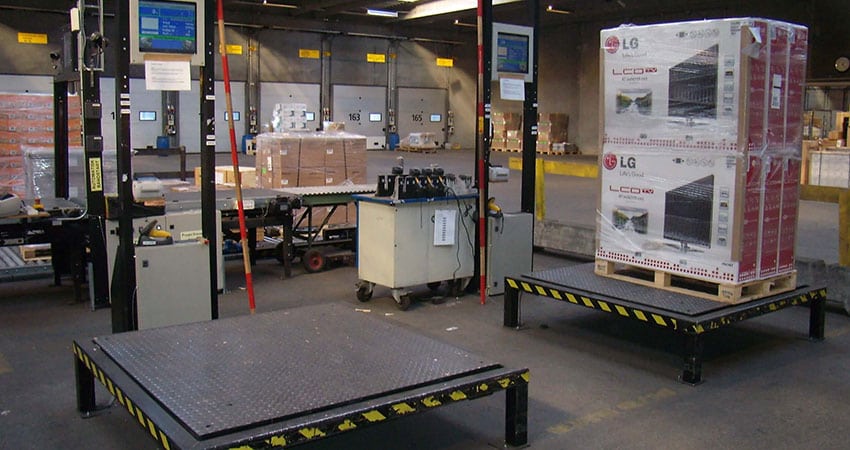At a high level most companies have heard about the benefits of accurate SKU dimensions and weights for each item in their warehouse management system, but many operations still aren’t utilizing them.
Without this information, companies can struggle to provide basic data for slotting, better capacity planning, and if necessary full truck or LTL planning. As a result, they may be paying more in accessorial and other freight charges, including on small parcels.
By having SKU dimensions of all your inventory, we mean accurate cubic and weight measurements via technology rather than manual measurements or estimates. Dimensioning is an important building block of managing your operations.
In order to determine SKU dimensions, companies need a cubing and weighing or dimensioning system. These systems are available in a variety of models such as mobile cart units or a large bed scanner in line with conveyors.
The basic systems scan the product to determine dimensions, weigh it and send the information to your warehousing or enterprise shipping system. Updating the product master file can either be batch or online in real time.
Benefits to Dimensioning Your Inventory
There are 8 major benefits to having weights and dimensions for your warehouse inventory:
Improved shipping costs accuracy
Obviously, it’s always best to have accurate weights in advance than an educated guess. Without this information it can be difficult to know whether you’re charging customers appropriately, except in a post mortem analysis – but by then it’s too late. You will see a decrease in accessorial fees through elimination of manual, costly errors.
Cartonization
In conjunction with your WMS, box sizes can be determined at packing stations through cartonization functions rather than relying on an individual to pick the best box size. This will save time trying different box sizes and reduce the use of large, air-filled boxes and unneeded dunnage. A cartonization function can determine if multiple items can be combined in a single carton.
Key to slotting
Dimensioning allows the slotting process to be easier and systematic in some cases. If you know the cubic measurements and the dimensions of a stock location, the slotting system can recommend the most advantageous location.
Future capacity planning
Dimensioned inventory greatly assists future warehouse capacity planning whether it’s reorganizing your existing space or planning a move to a new facility. One of the more laborious steps in planning out a new facility is determining how many pick and bulk locations are required. To do this accurately, the average and peak inventory based on cubic measurements needs to be the basis for the decisions. Additionally, having weights and dimensions helps you specify the pallet racking needed.
Conveyor and other automation planning
In determining the design for conveyor and other forms of automation, you need to determine the design goals based on the size and weight of items. If this is not readily available it becomes a fairly long process before final design and engineering can begin.
Shipping Automation – Print and Apply Applications
There are high-speed, print-and-apply shipping systems which for special operations scan, weigh, determine dimensions and cube, print and apply carton shipping labels.
Quality control
In some operations, quality control based on weight can be executed for inbound and outbound shipments. This can save time on inbound visual checks in the receiving and inspection process. For outbound it can signal potential mis-shipments.
Planning truck freight
If you are shipping full truckload or trying to cube out pallets, having cube and dimensions can save considerable time.
Implementation of Dimensioning Systems
Here is the process for implementing the dimensioning process in your DC:
- Select and acquire a dimensioning system.
- Devise a plan to measure and weigh all SKUs in the assortment. In some businesses this may take weeks to months to complete. Some manufacturers quote that a cart-mounted mobile system and a single employee can dimension 100 products per hour.
- New product measurements. Ideally, new products added to the assortment should be dimensioned as they’re added to your product master file or at the time of receipt.
The process is fairly simple but time consuming initially. Having accurate SKU dimensions for each item in your inventory makes dollars and sense both now and in the long term for managing capacity, automation planning and facility planning.
Brian Barry is President of F. Curtis Barry & Company

